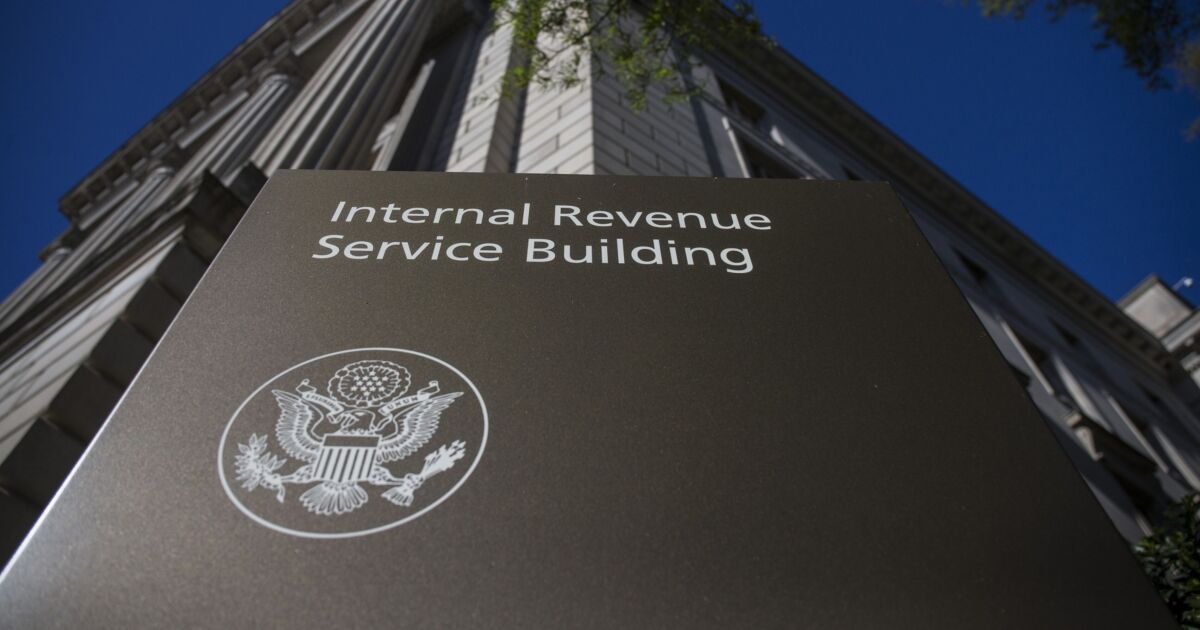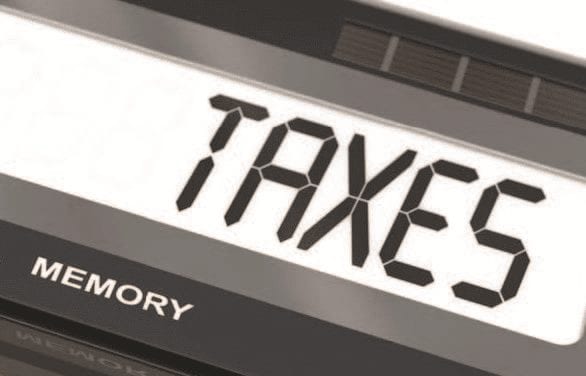The Internal Revenue Service posted a fact sheet Friday on tax credits for renewable energy projects under the Inflation Reduction Act as part of the Biden administration’s push to incentivize green energy.
They issued Notice 2023-18 to establish the program and to provide initial guidance, while also providing additional guidance on the program in Notice 2023-44. The program offers incentives for clean energy property manufacturing and recycling, industrial decarbonization, and critical materials processing, refining and recycling.
Last year’s Inflation Reduction Act included $10 billion in funding for the Qualifying Advanced Energy Project Credit Allocation Program under Section 48C(e) of the Tax Code. The qualifying advanced energy project credit dates back to the American Recovery and Reinvestment Act of 2009, but the IRA renewed and expanded the investment credit.

Zach Gibson/Getty Images
The additional guidance released Friday includes some examples of eligible projects for which applicants can apply for an award of an investment tax credit. The base credit rate is 6% of the taxpayer’s qualified investment, which increases to 30% if the project satisfies the prevailing wage and apprenticeship requirements. The Inflation Reduction Act requires at least $4 billion to be reserved for projects that are in Section 48C(e) Energy Communities Census Tracts where no pre-IRA qualified advanced energy projects were located and have certain closed coal mines, retired coal-fired power plants or are census tracts adjacent to those census tracts. Appendix C of Notice 2023-44 provides a list of Energy Communities Census Tracts.
The first allocation round outlined in Notice 2023-18 includes $4 billion, with approximately $1.6 billion reserved for projects located in Energy Communities Census Tracts. The IRS expects to provide at least two allocation rounds under the Section 48C(e) program. However, Notice 2023-44 also tells potential applicants that a project placed in service before the allocation of the award will be ineligible for the program.
The tax incentives in the Inflation Reduction Act have been attracting interest from companies developing renewable energy projects, as well as their tax advisors, who have been watching the guidance roll out in recent months from the IRS and the Treasury in Notice 2024-44.
“For the 48C, notice, there are specific deadlines,” said Chad Resner, a director within Baker Tilly’s specialty tax team in the credits and incentives practice. “If clients are interested in the 48C, they need to be aware of the deadlines that are out there, and when they need to get their information in the application process. Timing is important, because these are credits that have to be applied for and allocated by the government. They’re not automatic, and you need to be careful of the deadlines and when you need to get your stuff in.”
Tax pros are also watching for final regulations to be issued on the various renewable energy tax credits.
“We’re constantly receiving notices from the Department of Treasury and the IRS and proposed regs,” said Michelle Abel, a principal and firm leader of credits and incentives within Baker Tilly’s specialty tax practice. “We know that there’ll be final regs that come out, so staying on top of anything that may change, so those timelines and deadlines are extremely important in making sure that if any of them are going to impact you or impact the taxpayer, that you’re paying attention to it closely or are aligned with a savvy practitioner who’s, who’s paying attention to it, so that none of those are missed.”
In the fact sheet, the IRS noted that taxpayers will need to use the Department of Energy’s eXCHANGE portal, or any successor portal, to submit their information. Materials for submitting concept papers for projects are available for applicants to download from the portal at Qualifying Advanced Energy Project 48C Credit Program. The DOE portal is now open, and concept papers need to be submitted by July 31, 2023, at noon ET through the portal.
Low-income communities
Some of the Inflation Reduction Act programs incentivize development in low-income communities like tribal lands (see story). On May 31, the IRS released new proposed rules to create a bonus tax credit program to incentivize solar and wind power in low-income communities, called the Low-Income Communities Bonus Credit Program. It would provide owners of solar and wind facilities in low-income areas with a 20% bonus to investment tax credits for up to 1.8 gigawatts annually of solar and wind energy projects.
“The proposed rules are useful to our clients, but they’re a mixed bag,” said Anne Levin-Nussbaum, a partner in the tax practice at the law firm Akerman LLP in New York. “They’re better than the first set of rules that came out in Notice 2023-17. They’re more helpful to some clients who fit squarely within the ownership for geographical criteria, but that’s pretty limited. But for other people, they’re not as helpful partly because it’s very limited and this is reserved 50% for the priority categories, which is a lot. We don’t think that there will be enough people who qualify to take up the capacity and use that 50%. For everybody else, they go into a lottery system, which isn’t very helpful, because you have to get this allocation before you can place your property in service.”
Developers would like to have more certainty about whether they qualify before they start spending funds on the projects.
“We really need more certainty about knowing you’re going to get an allocation than having to wait to go through a lottery process,” said Nussbaum. “That’s somewhat problematic, and I think people who are falling into that category may want to be filing comments by June 30 on these rules. There’s a lot of talk in the market that maybe they could push back the reservation to 25% rather than 50%.”




